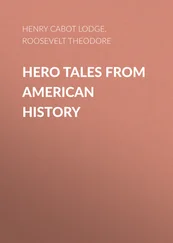With thermonuclear war an ever-present danger, with an ongoing war escalating in Vietnam—a meatgrinder into which American youth were regularly tossed—and with social justice still an elusive goal in America, there was much to protest and reject in mainstream society. Marijuana was one form of protest, alternative, and escape (all rolled up into a cigarette called a roach or joint). Sex (which many youth in the 1960s saw as a synonym for love) was another. Yet another alternative was religion—not the “outworn” faiths of the Judeo-Christian West, but the apparently less materialistic beliefs of the East. The decade spawned a series of spiritual leaders, or gurus, including the Maharishi Mahesh Yogi (b. 1911?), who introduced a generation to Transcendental Meditation. Mahesh gained renown as spiritual counselor to a bevy of celebrities, including the Beatles.
A guru of a different kind exhorted his followers to “expand” their minds with a hallucinogenic drug called LSD, which (it was claimed) offered users a universe of “psychedelic” experience. “My advice to people today is as follows,” proclaimed Harvard psychologist and LSD advocate Timothy Leary (1920-96) in 1966: “If you take the game of life seriously, if you take your nervous system seriously, if you take your sense organs seriously, if you take the energy process seriously, you must turn on, tune in, and drop out.”
By taking drugs—”turning on”—one would “tune in” to what was really worthwhile in life and, as a consequence, be prompted to “drop out” of life in the hollow mainstream. The phrase became the banner slogan of a generation: Turn on, tune in, drop out.
Americans who had, to one degree or another, turned on, tuned in, and dropped out characteristically called themselves hippies (derived from hip, slang for being attuned to the latest social trends). The hippie movement, despite its association with drug-induced escapism, was certainly not all negative. The movement placed emphasis on kindness, on affection, on looking out for one’s fellow being, on caring for the natural environment, on social justice, on freedom of expression, on tolerance, on fostering creativity, on general peaceful coexistence, and on other life-affirming values. Naive from today’s perspective, perhaps, hippies seemed to be engaged in a mass attempt to will the world to return to innocence. And if love was often confused with sex, the word love took on a more general meaning as well, as in the biblical injunction to love thy neighbor.
For many who remember the 1960s fondly, the era was summed up in the summer of 1969, called the summer of love and capped by an open-air rock-music festival held on a farm near Woodstock, New York, August 15-17, 1969. The most popular rock music performers of the time drew perhaps 500,000 fans, who indulged in three days of song, drugs, sex, and (there is no other word for it) love. Woodstock immediately became a cultural icon, symbol of a generation’s solidarity in rebellion against the Establishment (a collective label given to those who controlled the status quo) and its war in Vietnam. Woodstock was a symbol, too, of a generation’s hope for a better world.
As much as the counterculture wanted to believe it, the Establishment did not fail in all it put its hand to. Beginning with the launch of Sputnik I in 1957, the United States had consistently come in second to the Soviet Union in the space race. In 1961, President Kennedy made a speech in which he set a national goal of putting a man on the moon before the end of the decade. At the time, few Americans thought this goal was realistic, but on July 20, 1969, at 4:17 p.m. (Eastern Daylight Time), the people of a world shaken by a multitude of fears, gnawed by myriad acts of injustice, and racked by a terrible war in Southeast Asia, watched live television pictures of two American astronauts setting foot on the lunar surface, a quarter million miles from earth.
“That’s, one small step for man,” Neil Armstrong declared as he hopped down off the ladder of the lunar excursion module (LEM) Eagle, “and one giant leap for mankind.” The successful mission of Apollo I I was a national—and human—triumph in a time of bitterness, pain, doubt, and rejection of long-cherished values.
Unfortunately, the government that put men on the moon was capable of moral lapses as deep as its lunar aspirations were lofty. During June 19 7 1, the New York Times published a series of articles on a secret government study popularly called The Pentagon Papers. The 47-volume document, compiled between 1967-1969 by Defense Department analysts, meticulously revealed how the federal government had systematically deceived the American people with regard to its policies and practices in Southeast Asia. Among many other things, the study showed how the CIA had conspired to overthrow and assassinate South Vietnam president Diem, and it revealed that the Tonkin Gulf Resolution was actually drafted months in advance of the attack on the destroyer Maddox and the apparent attack on the C. Turner Joy, the events that supposedly prompted the resolution.
In 1971, Daniel Ellsberg, an MIT professor and government consultant who had access to the study and who had become disgusted and disillusioned with the Vietnam War, leaked The Pentagon Papers to the Times. The Department of Justice attempted to block publication of the document, but the Supreme Court upheld freedom of the press and ruled in favor of the newspaper. Although Ellsberg (whom some deemed a hero, others a traitor) was indicted for theft, espionage, and conspiracy, the charges were dismissed in 1973 because the government had acted illegally in obtaining evidence. Part of the govern-ment’s illegal action included, at the behest of the Nixon administration, burglarizing the office of Ellsberg’s psychiatrist to find material to embarrass the whistle blower.
The revelations of The Pentagon Papers marked a low point of popular faith in the American government and the continued prosecution of the Vietnam War. The effect of these documents was profoundly depressing precisely because Americans had long taken for granted that theirs was a free, open, honest, and noble government—as Abraham Lincoln had put it, “the last best hope of the world,”
SALT, China, and the Middle East
Last best hope. President Nixon, who had risen to power in Congress through his uncompromising, at times virulent stance against communism, now worked with his advisor Henry Kissinger to engineer detente with the Soviets and with the communist Chinese. His most immediate motivation was to cut them loose from North Vietnam, but the ramifications of the Nixon-Kissinger diplomacy extended far beyond the Vietnam War. The consummate “cold warrior,” Richard M. Nixon initiated the long thaw that ultimately ended the Cold War.
In 1968, the United Nations sponsored the Nuclear Non-Proliferation Treaty, which sought to limit the spread of nuclear weapons by persuading nations without nuclear arsenals to renounce acquiring them in return for a pledge from the nuclear powers that they would reduce the size of their arsenals. The following year, the United States began negotiations with the Soviet Union to limit strategic (that is, nuclear-armed) forces. These ‘Strategic Arms Limitation Talks (SALT) produced a pair of important arms-control agreements in 1972. Then, from 1972 to 1979, the talks of SALT II were conducted, extending provisions formulated in 1972. Although the U.S. Senate failed to ratify SALT II, the two nations generally abided by its arms-limitation and arms-reduction provisions.
Perhaps even more remarkable was President Nixon’s February 1972 journey to China, where he was received in Beijing by Chairman Mao Tse-tung, the very incarnation of the communism Nixon had spent his life opposing. In a single stroke of diplomacy, Nixon reversed the long-standing U.S. policy of refusing to recognize China’s communist government, and by January 1979 (under President Jimmy Carter), full diplomatic relations were established between the nations.
Читать дальше












